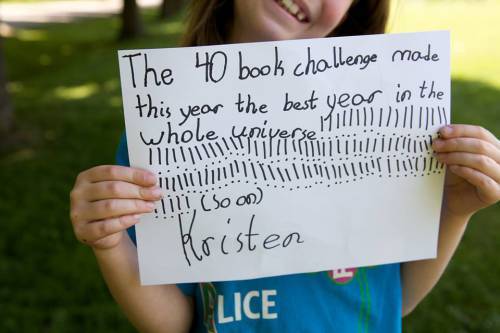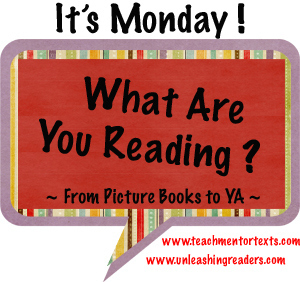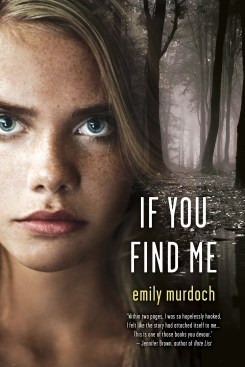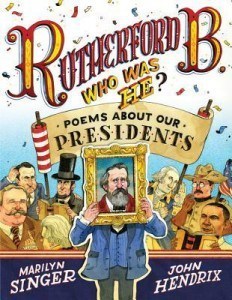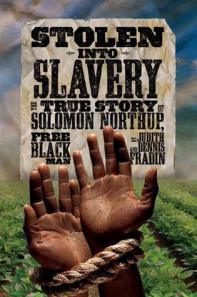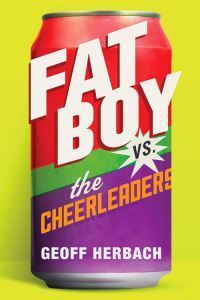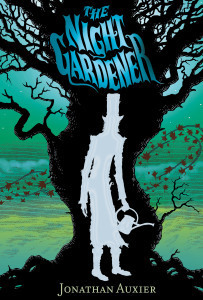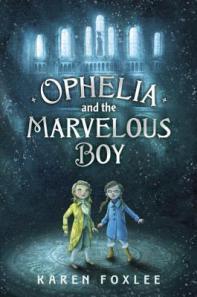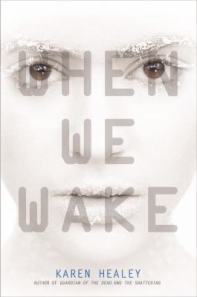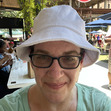Donalyn Miller's Blog, page 2
August 12, 2014
The 40 Book Challenge Revisited
Years ago, at a professional development workshop, Ellin Keene poked fun at the creator of the overwrought and overused “Text-to-Self, Text-to-Text, Text-to-World” reading strategy. If you’re laughing right now, you know that Ellin is one of the original architects of this strategy, which appears in her groundbreaking book (co-authored with Susan Zimmerman), Mosaic of Thought.
A few years back, a woman proudly announced to me at a workshop that she was, “doing her own version of the Daily 5, but she could only get in three of them.” I imagine Gail and Joan want to know which three. I should have asked, ladies, but I was at a loss for words.
It happens; the original thinking behind an instructional idea becomes lost when it’s passed along like a game of Telephone. You heard about it from a 60-minute conference session. Your teammate attended a book study and she gave you the highlight reel. The teacher down the hall is doing something innovative. You should try it. We’ve all seen the quick adoption of shiny, new ideas without a full picture of how these concepts fit into best practices (or don’t).
I’ve shared many ideas through my teaching and writing, and I stand by what I’ve put out into the world—but the one idea most demanding a revisit is my 40 Book Challenge, which appears in The Book Whisperer. In a nutshell, the 40 Book Challenge invites students to read 40 books across different genres during the school year.
I wonder sometimes if I failed to communicate the true intentions behind the 40 Book Challenge. Teachers email me or contact me on Facebook and Twitter about it every day. I have also seen a lot of what my dear friend, Teresa Bunner calls, “Book Whisperer Gone Bad” activities that actually undermine children’s development as independent readers instead of fostering it.
On Teachers-Pay-Teachers, I found worksheets, award certificates, rubrics, and posters using “The 40 Book Challenge.” While citing me as the source (shudder), the teacher who designed these materials offers incentives and creates competition between readers—the antithesis of my teaching philosophy and research about incentives tied to reading.
An unfamiliar parent emailed me to complain. She tracked me down on the Internet after asking her son’s teacher about the “outrageous requirement” that students read 40 books and complete 40 book reports this school year. Her son’s teacher said the assignment was based on my work, and this upset mom wanted me to know that I was hurting her son. I responded that while I expect my students to read 40 books, I don’t tie any assignments or grades to this expectation.
A close friend shared on Facebook that a teacher publicly humiliated his daughter because she “only” read 35 books this school year. The complexity or length of the books his daughter read weren’t considered. What she gained from these reading experiences didn’t matter, either.
Visiting a school last spring, a 4th grade teacher told me that she didn’t “allow” her students to “count” any books that were under 100 pages long. Walking the school library together, I asked the teacher to look at the biographies, traditional literature, and nonfiction texts available (and appropriate) for her 4th graders to read. After 20 minutes of searching, we found 12 biographies that met her stringent guidelines. It never occurred to her that she was limiting her students’ choices or access to books.
The 40 Book Challenge isn’t an assignment you can simply add to outdated, ineffective teaching practices. The Book Challenge rests on the foundation of a classroom reading community built on research-based practices for engaging children with reading. Assigning a 40 Book Challenge as a way to generate grades or push children into reading in order to compete with their classmates corrupts everything I have written and said about reading. The 40 Book Challenge is meant to expand students’ reading lives, not limit or define it.
The 40 Book Challenge is a personal challenge for each student, not a contest or competition between students or classes. In every competition or contest there are winners and losers. Why would we communicate to our students that they are reading losers? For some students, reading 40 books is an impossible leap from where they start as readers, and for others, it’s not a challenge at all.
If Alex read two books in 4th grade and reads 22 in 5th grade, I am celebrating with him. What an accomplishment! Look how much Alex grew. He didn’t grow because he read more books. He grew because he had 22 successful reading experiences.
Conversely, when Hailey read 55 books in 4th grade, reading 40 books in 5th grade isn’t challenging her. Encouraging Hailey to read biographies and historical fiction, which she claims to detest, does more to stretch her than simply reading more books.
Honestly, I don’t care if all of my students read 40 books or not. What matters is that students stretch themselves as readers and increase their competence, confidence, and reading motivation through their daily participation in our reading community. The 40 Book Challenge works for my students and me and for the many teachers successfully implementing it because of these core beliefs:
Everybody reads here. Let’s get started. Our direct influence on students’ reading lives lasts 40 weeks—36 weeks of school and 4 weeks of school vacation. Setting high expectations (roughly a book a week) communicates that reading is ongoing and continues from the first day of school to the last—hopefully longer. Students should spend more time reading than they spend completing reading-related activities like worksheets, reading responses, and projects. Students who read the most will always outperform the students who don’t read much (Krashen, 2004).
*Strong readers have lots of reading experiences. You need to be a good all-around reader. Encouraging students to read widely—sampling books from every genre—improves their reading ability by expanding their reading experiences. If you spend every day working on your jump shot, you’ll improve your jump shot. To be a strong all-around player, you must practice passing, guarding, and dribbling, too. To be a strong reader, you must practice reading poetry, fiction, nonfiction, wordless books, graphic novels, blog posts—a little bit of everything.
*There’s the right book for you out there somewhere. Let’s find it. For many students, trying a lot of books helps them find the one type of text that excites them and invites them into reading. True preferences come from years of wide reading—trying books, having some false starts, discovering authors, genres, and writing styles that we enjoy. Students who haven’t read much may not have found the books that speak to them. Reading buffet-style—tasting all types of books—students can discover what the world of reading has to offer.
*Whether you read or not isn’t a choice, but what you read is YOUR choice. I don’t waste a lot of time at the beginning of the school year talking about why students might not like to read. Everybody reads here. Everybody is a reader. Whether you read or not is off the table, but what you read is your choice. Whatever you want. You pick. Providing students with choice in what they read increases their reading motivation and engagement (Gambrell, Coding, & Palmer, 1996; Worthy & McKool, 1996; Guthrie & Wigfield, 2000).
*Your reading life matters. Students’ personal reading goals have as much value as our academic goals. Classrooms exert tremendous influence on the development of students’ reading identities—whether it’s positive or negative. While students learn the skills of reading, they must develop a positive reading identity to remain readers (Serafini, 2013).
Without these core beliefs in place, the 40 Book Challenge becomes another tedious reading assignment that drives kids away from reading. If students leave our classrooms hating to read or skate through without any positive reading experiences, we have failed. It doesn’t matter what they scored on the reading test. It doesn’t matter how many books they read if they stop reading when they leave our classrooms.
I recently received a Facebook message and photos from Aliza Werner, a third grade teacher at Parkway Elementary School in Glendale, Wisconsin. Aliza and her students held a 40 Book Challenge last school year, and she wanted to share her students’ successes with me, “Through the challenge, we created an enormous sense of community that embraced comfort, security, growth, sharing, excitement, and organic learning and curiosity that I had never felt before in any class.”
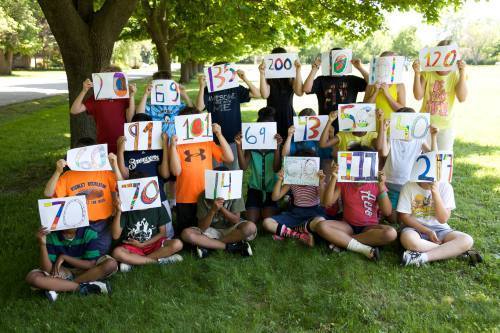 Aliza’s 20 students read 1741 books last year and they all met or surpassed their academic reading goals. More important, these 9-year olds developed a bond with each other and with reading that will last long after 3rd grade. Recounting anecdote after anecdote about her students’ individual reading successes, Aliza told me, “I could go on and on, as I am so proud of each of them in their own way.” Looking through the photos of Aliza’s beaming students, this note from Kristen made me smile.
Aliza’s 20 students read 1741 books last year and they all met or surpassed their academic reading goals. More important, these 9-year olds developed a bond with each other and with reading that will last long after 3rd grade. Recounting anecdote after anecdote about her students’ individual reading successes, Aliza told me, “I could go on and on, as I am so proud of each of them in their own way.” Looking through the photos of Aliza’s beaming students, this note from Kristen made me smile.
It’s clear that Aliza and her students embraced the full intent of the 40 Book Challenge. Aliza says that her students are still chatting over the summer–sharing their reading. In a classroom culture where reading threads through every class day and every conversation—everyone grows as a reader and finds reading more interesting and personally meaningful. Every reader has value. Every reading experience has value. It doesn’t matter who ultimately crosses an arbitrary finish line.
How can we empower our students and help them grow? How can we make reading an exciting adventure? What do we want our students to remember about reading and our classroom community when they leave? The 40 Book Challenge kicks off a year of reading. That’s Day One. What about the rest of the year? Developing students’ positive reading identities and development as lifelong readers—these must remain our priorities every day, all year long.

June 1, 2014
What Remains
“Someday, in the mist of time,
When they ask me if I knew you,
I’d smile and say you were a friend of mine.
And the sadness will be lifted from my eyes.
Oh, when I’m old and wise.”
–“Old and Wise,” The Alan Parsons Project
If you want to feel life at its fullest, attend a high school graduation. Look into graduates’ beaming faces and you’ll see it—their eyes glow like stars. Youth at its pinnacle. Adulthood on its first day. Freedom personified.
For a few hours, the adults called to witness this passage feel what it’s like to be young again. We remember. But we are only visitors now. We passed this way once, but we can’t stay long. We feel time’s march and our place in it. No matter how much we influenced these golden children, we have moved into the past now. Just a few paragraphs in their stories. Chapter One.
And life goes on.
It’s hard to explain sometimes why anyone chooses to teach. Teaching is challenging work. It’s often thankless. Beset on all sides by condescending people who infantilize us and tell us how to do our jobs. Sisyphean paperwork and endless meetings. Why would anyone endure it?
“I like working with young people.”
“ I believe in the power of education.”
–Shadows of the truth, interview platitudes that fail to capture the intensity of our relationships with students. You want to know why we teach? We look at the sun without blindness and feel its warmth. We hold possibility in our hands. We see hope manifest. Year after year, we see life reborn. Teachers are keepers of the flame. The children stand as life’s promise. We will go on.
Teaching is touching immortality.
My students make me feel alive and through them, I live forever.
As this school year ends, I feel the weight of this pact more than most years. My fifth graders are leaving our building for middle school next year. I am leaving, too. Packing my classroom, passing back notebooks, clearing the walls. When Room 211 empties this Friday and the children and I leave it forever, I wonder what remains. Will my students remember what they’ve learned? Will they remember our classroom family? Will they remember the books we read? Most of all, will they remember how much I loved them?
While my professional training prepared me for many things—designing lessons, implementing best practices, working with other teachers—it never prepared me for the fierce, territorial love and concern I feel for my students. These children—brilliant, loving, flawed, hurting, and needy—come into my classroom every year.
My family knows my students’ names and their stories both heartwarming and tragic, I worry about my students long after they leave me, and my life becomes entwined with theirs—for one school year at least—often longer. As much as I hope to change children’s lives, my relationships with students transform me. They are forever mine, and I am forever, their teacher.
On their worst day. On my worst day. Until my last day on Earth, I will love them all. That’s my promise.
Twenty years down the road, what else could they take away from my class that matters more?
I spent the evening attending a graduation party for one of my former 6th graders, Daniella. Flitting around the party, laughing with friends, hugging relatives, dutifully talking with all of her guests, Daniella was bubbly and brilliant. She is glad that high school is over. She is ready for her next life.
Chatting with several former students at the party, I asked each one, “Where are you going? What are you going to do?”
“University of Texas. Biology.”
“Oklahoma Baptist. Art, and I’m going to swim for them.”
“Weatherford. Architecture.”
“Full Sail. Media Communications.”
“Midwestern State. Undecided.”
“Two year mission in Mexico.”
They all had an answer, but I could see it in their eyes. They don’t know. They don’t know where they’re going. They don’t know what they are going to do. Their eyes shine a little too brightly. There’s fear underneath it. An unanswered question, “What’s next?”
I don’t have an answer for them. I wish I did. All I have is the promise I made to them years ago. I love you, my bright stars. I believe in you. I always have. I always will.
Life goes on.
Love remains.
The most important lessons ever learned.

April 19, 2014
Famous
One of the best things about being a published writer is that you run into people at conferences who have read your book. I enjoy meeting colleagues who share my professional interests. Talking to other teachers and librarians about the importance of reading excites me. These conversations engage my brain.
I know that I’m a better teacher now because I have learned from some of the best teachers in America—the ones I meet while presenting at professional development conferences and workshops. Anyone who gets up early on a Saturday morning to learn about reading instruction is my kind of person.
And sometimes, these kind colleagues will ask me to sign my book for them. It is awesome. Signing books is fun. It is one of the best things.
But, it’s not the best thing.
At the end of every school year, I cull our class library and my students help. My class librarians and I examine every book and I pull out damaged books, duplicate copies, and out of date books. I dig out books no one has read all year and booktalk lots of them. Kids recommend books to each other and take more reading risks—branching out to try books they haven’t already read this year. Our class has renewed excitement for reading.
Every morning, I fill one marker rail with discarded books, scrawl “Free to good homes!” on the whiteboard and invite my students to take these books. I know many of my students don’t own books, and I would never sell my used books when I can give them away to kids.
A few students each day grab a book off our giveaway rail and bring it to me, so that I can write “discard” in it. Wednesday, two girls in my afternoon class shyly asked, “Can you write your name in our books, too, Mrs. Miller? When we donate books to the class library, you always ask us to write our names in them. You should do it, too!” I smiled, “Sure, girls.” All of the kids wanted me to sign their books. I’ve been writing “donated by Mrs. Miller” in books all week.
My favorite book signings ever.
It’s true that some teachers are famous for what they contribute outside of the classroom.
But all of us are famous for what we contribute inside of the classroom.
Teachers feed more dinner table conversation than Beyonce and Peyton Manning. We are famous (or infamous) to our students and their families. These relationships matter. One of my favorite poem is “Famous” by Naomi Shihab Nye, my fellow Texan. This poem centers me, and I read it often. (Read it. I’ll wait.) “famous as the one who smiled back,” that’s how I want to be remembered.
As we end another school year, reflect on how you’re famous to your students. How will they remember your class and you? What can you celebrate? What do you still need to teach them before they go? What can you do together to end this year memorably?
I wish you the best for your last weeks with your students and colleagues. Enjoy your time with them.

March 29, 2014
Common Knowledge
Yeah, so this happened:
My little Book Whisperer, which turns five-years-old this month, received its worst review. I’ll admit HH’s words hurt my feelings. I read it out loud to my husband and texted a few friends about it. At first, I was offended. Don’t I know how mainstream my ideas are? Anyone who’s read anything knows how to engage children with reading. My ideas are common knowledge to all teachers. I wish HH was right. Unfortunately, HH presumes that most traditionally trained teachers know best practices in language arts instruction, and apply these practices in their classrooms.
HH, your experiences are not my experiences. Sadly, I’ve never worked in a school where more than a handful of teachers knew who Richard Allington or Peter Johnston are. I’ve worked in schools where no one reads children’s books, including the librarian. I weep because my daughters will never have a high school teacher like Penny Kittle or Kelly Gallagher. Instead, Sarah, spent 7th grade pre-AP English filling out S.E. Hinton crossword puzzles. I wish more teachers believed what you and I believe, HH, but they don’t.
HH, it’s clear that you and I are kindred teachers, shaped by the same body of knowledge. You and I both know that “students need time to read and teachers must be avid and passionate readers.” I’m glad that you live and teach in a world were these concepts are widely understood, but a lot of teachers and kids have never seen your world. Are you naïve that many of our colleagues—pressured to prepare students for endless, mindless tests—have jettisoned best practices like unnecessary cargo under an onslaught of mandates and accountability initiatives?
Even in schools where teachers understand and implement research-proven instruction, many must battle ignorant administrators who lack a fundamental knowledge of quality instruction. They struggle with parents who don’t value reading or support their children academically. I’m invited to speak in schools that want to improve their test scores, but the kids don’t have books to read and parent volunteers run the library. They don’t get it.
I’m glad, HH, that you live and teach in a world where children have engaging, accessible books and time to read them. I’m glad that your colleagues and you read. I’m glad that your school community supports reading. I’m glad that my dream—a place where children love reading and adults model reading lives exists somewhere in the world.
It sounds like Paradise. I hope I see it some day.
HH, your review is true. My entire body of work should be common knowledge by now, but it isn’t. Trust me, when I say that I’m doing my part to see that it is. I know a lot of teachers, librarians, authors, and parents who strive every day to make reading better for kids. It comforts me that you are out there, too. It’s great that you don’t suffer the same obstacles to good teaching that many of us do.
I’m still mad that you didn’t like my beloved Book Whisperer, though. It’s just another book about teaching reading to you, but anyone who really knows me understands that The Book Whisperer is my memoir. When I open that book, memories fall out of it—a sea of students’ names, book titles, field trips, lessons, and conversations. Besides my two daughters, I know that The Book Whisperer is my shining achievement. I’m proud of it. You don’t have to like it or see it as groundbreaking. I love every one of the students in that book. Our years together matter. Your opinion doesn’t fit into the picture.
Share what you know with as many people as you can, HH. I’m still learning how to be a good teacher. I hope you still think there’s something to learn.
Professional Development Discussion Opportunity
**Talking with Teri Lesesne this week, we discovered a shared interest in reading and discussing several influential research articles together. Join us for a Twitter discussion of Richard Allington’s “Every Child, Every Day,” on Sunday, April 13th at 7 pm Central.

February 22, 2014
I’m a Reader, Not a Writer
My six-month journey with a broken tooth ended today when my dentist installed a permanent crown. Chatting with the dental hygienist, she asked me what I did, “I’m a teacher and a writer.” As we left the office, my husband told me he was proud of me, “I’ve never heard you tell a stranger that you’re a writer before. That’s new.”
Last Saturday, my friend and colleague, Gretchen Bernabei, led professional development in our school district. Her area of expertise? Teaching writing. Sitting with Gretchen and our district ELA coordinators, Gretchen and I joked about how hard it is to see ourselves as writers.
“I write technical writing. It’s not like real writing,” Gretchen said.
“Writing is hard. The only way I get any writing done is waking up at four a.m. and writing. Otherwise, I would talk myself out of it most days,” I admitted.
One of my district friends shook her head, “If the two of you—both published authors—feel insecure and struggle with writing, that makes me feel better about my own writing!” We spent lunch chatting about writing, teaching writing, and fostering students’ ownership for their writing, too.
I know it’s absurd, but I have only recently seen myself as a writer. I wrote two books, and I’m working on another. I write for Nerdy Book Club and this blog on a regular basis. I’ve published journal and magazine articles. I’ve been a professional writer for seven years. I was a writer long before I published anything, but I define myself as a reader, not a writer.
For me, writing is one long response to my ongoing affair with reading and books. Love letters, memoir, manifesto. I write about reading to extend my reading life. I’m an artist’s patron, not her equal. I write about reading because reading doesn’t matter to enough people. I want more people to care.
If I stopped writing about reading, I would stop writing. That’s the truth. Fortunately, I can connect almost anything in my life back to reading. Reading frames my life already. No surprise that reading would frame my writing life, too. I have finally realized that if I value reading so much, I must value writing about reading more. Even though I still see myself as a reader who writes, I can own the writer label honestly now.
My dearest friends are writers, too, but all wear their “writer” badges uneasily. Why is it so hard to take ownership of our writing? Here’s what I need to remind myself and share with you.
Just this:
If you write, you are a writer.
If you don’t write, you are not a writer.
If you want to be a writer, you must write.
The only writers who struggle with writing are ALL of them.
Write about what matters to you and make the rest of us care about it.
Anyone who tells you she’s a writer must believe it herself before she can admit it to you.
Of course, I could give you the exact same advice about reading.
But you knew that already.

February 12, 2014
Bless It All
My students and I launched our second semester by celebrating our reading accomplishments (so far) and looking ahead to new reading experiences. I created an online survey where students could reflect on their reading habits, recommend books to each other, and set reading goals.
I decided to model answering the questions by taking the survey in front of my students. Working through the survey while projecting it on a screen, my fifth graders tried to guess my answers.
We write and talk together a lot, and the kids know me well. They know that I love coffee, green (except neon green), and owls. They know that I have a scar on my ear from a dog bite. Of course, they know I love to read and I want them to love reading, too. It amused me when they couldn’t answer questions about my reading preferences that well.
Reading out loud question #4, I asked, “What is my favorite genre and why?”
Alex called out, “I know this one! You like books about animals. You give me snake books all of the time.”
“Yeah, you give me dog books, too, and you brought that animal poetry book. I know you like reading about animals,” Destiny agreed.
“I think Mrs. Miller likes historical fiction. She recommended Number the Stars to me,” Ryleigh said.
“You always read us sad books like Wonder and The Little Match Girl,” Sam said, “but that’s not a genre, is it?”
My students began bickering, each one claiming that my favorite genre was their favorite genre.
Hailey chimed in, “I think Mrs. Miller likes to read anything, as long as it’s good.”
You and I have that in common, Hailey, I thought. I laughed and agreed, “That’s true, Hailey. I read a little bit of everything. When I was your age, I read Grimm’s Fairy Tales and Greek mythology.”
Neil and Jeremy, diehard Lightning Thief fans, gave a little, “Woot!”
As much as I have influenced my students’ reading habits over the years, they have influenced mine. Some time ago, I realized that I gravitated towards the students who loved the same books I did, like fantasy epics and books about animals. Was I missing an opportunity to connect with some of my students or connect them with books? I couldn’t let my book preferences favor certain kids over others in my class.
Since that time, I have pushed myself to read more widely than twelve-year old Donalyn did. Reading out of my personal tastes benefits my students and me:
Trying a little bit of everything keeps my reading life fresh and exposes me to books that I might not have tried.
I can recommend books to my students that match their tastes, not mine.
My students appreciate each other as readers and don’t feel pressure to like the same books.
I communicate to my students that whatever we are reading, and whoever we are as readers—it’s all good.
Linda Gambrell often says, “Kids read what we bless.” If we want kids to find themselves as readers, value each other, and take risks–both in reading and in life, we must bless their books–and them.

February 7, 2014
The Grasshopper and the Ant
My husband Don and I read a lot, but we don’t read the same books often. Our tastes overlap on occasion, but we read parallel more than perpendicular.
Don doesn’t have a reading agenda that requires reading for anyone’s motives but his own. His job doesn’t require him to read certain text and he doesn’t feel the need to impress anyone with what he’s reading.
OK, that’s not completely true. He reads for me, sometimes. Every once in a while, I find an author or a book that I want to share with another reader, and I know that Don’s the best choice. Don is not a teacher or a librarian, but he likes to keep up on what’s good in the book world. He knows that young adult literature has some of the best writing around these days.
Don only reads a few children’s or young adult books each year, which makes me careful about what I recommend to him. Recognizing that he reads YA selectively, I don’t waste his time. Last year, I threw him Eleanor & Park by Rainbow Rowell and Daniel Kraus’s Scowler. The year before, Don and I shared John Green’s The Fault in Our Stars and The Raven Boys by Maggie Stiefvater.
You could probably guess my favorites each year by identifying the five or six YA books that Don reads. Call it The Best in Disturbing YA. Looking back through Goodreads at 2012 reveals an ongoing pattern of dark, trippy titles swapped between us. Don read Patrick Ness’s A Monster Calls, Stupid Fast by Geoff Herbach, and Libba Bray’s Beauty Queens. Talking with him tonight, I asked, “Did you read Everybody Sees the Ants?”
Don squinted, “I don’t thinks so.”
I gasped, “What? I have wronged you if I haven’t introduced you to Amy King. We have to fix that.”
Don said, “I did read Scorpio Races that year, though.”
“Yeah, but you didn’t like it,” I reminded him, “You said it was too horsey.”
Don said, “I totally saw what you loved in it, but it wasn’t for me. I wasn’t a big fan of Misty of Chincoteague, either.”
Every once in a while, Don reads a promising YA book before I do. He reminds me occasionally that he was the first one to finish The Knife of Never Letting Go by Patrick Ness. Last week, a copy of Andrew Smith’s Grasshopper Jungle arrived at our house. There’s lots of buzz about this book and I know Andrew Smith is an intriguing, talented writer. Don and I chatted about the book when it arrived, but I couldn’t get to it right away because I was reading a few other things.
Don took Grasshopper Jungle and burned through it in three days. He’s been raving about it around the house and on Facebook. I haven’t seen him this jazzed about a book since E & P last fall.
I find it interesting that Don and I have a separate fondness for Andrew Smith’s work without sharing a single book in common. Don read Stick. I read Winger. We both abandoned The Marbury Lens (sorry, Andrew) because we found it too strange—even by our high-tolerance standards. We made a pact to reread it soon.
But I am reading Grasshopper Jungle this weekend. You should probably read it soon, too.
I am actually a little frightened, but that’s what Andrew Smith’s books do to readers.
Don expressed interest in reading and rereading all of Andrew’s books now, but I urged him to take his time, “Look, I have met Andrew and he’s a nice, well-adjusted guy, but even Andrew spread out his experiences writing those books. His books are weird—they bend your brain. When you know that every book is going to affect you like that, you should probably space them out.”
Don, “How about Everybody Sees the Ants?”
I laughed, “Yeah, that’s going to bend your brain, too. In all the best ways, of course.”
Don, “Sounds perfect!”

December 30, 2013
It’s Monday, What Are You Reading? December 30, 2013
Welcome to the weekly meme, It’s Monday! What Are You Reading? Visit Teach Mentor Text and Unleashing Readers to learn more about this weekly reading celebration and sharing event.
And end-of-year ritual–Don and I sort, clean, and cull our 13 bookshelves. We discover duplicates. We reunite series sisters. We donate books to the four corners–classrooms, children, colleagues, charities. A subtle shift on every shelf–some books disappear and others move to permanent shelf space. A year of reading closes and another opens.
This time of year, my reading choices vacillate between must-read 2013 titles like award nominees and ALA Award hopefuls, the books I received for Christmas, and emerging 2014 titles. It’s overwhelming. My reading experiences last week and my reading plan for this week reflect my scattered approach to book selection right now. I am enjoying #bookaday during the school break and finding gems on my newly-catalogued shelves.
Last Week’s Reading Highlights
If You Find Me by Emily Murdoch
God Got a Dog by Cynthia Rylant, illustrated by Marla Frazee
Rutherford B., Who Was He?: Poems About Our Presidents by Marilyn Singer, illustrated by John Hendrix
Stolen Into Slavery, The True Story of Solomon Northrup, Free Black Man by Judith Bloom Fradin and Dennis Brindell Fradin
Becoming Ben Franklin by Russell Freedman
Fat Boy vs. The Cheerleaders by Geoff Herbach
This Week’s Reading Plans
The Night Gardener by Jonathan Auxier
Ophelia and the Marvelous Boy by Karen Foxlee
When We Wake by Karen Healey
The ongoing bookshelf purge continues. I will uncover more unread treasures. Thankfully, I have another year of reading ahead to enjoy.
Happy New Year and Happy Reading in 2014!

December 23, 2013
Jump on the Bandwagon
“The great thing about rock-n-roll is you realize the top of the mountain is big enough for more than one band.”
–Paul Stanley
This week, Don and I attended Sarah’s Winter Band Concert. All three junior high bands were scheduled to perform. The packed high school auditorium we borrowed was too small for the crowd. Parents and grandparents stood in the aisles. Everyone smiled and greeted each other. We were in this together—supporting and celebrating our children’s accomplishments.
The Beginning Band played first. Composed of new musicians—who learned to hold their instruments twelve weeks ago—you could see students’ pride and nervousness about performing their first concert. Parents cheered and applauded. The kids beamed. Don and I remarked how small the seventh graders looked now, “Can you believe that was Sarah two years ago?”
Concert Band performed next. The kids in Concert Band are second and third year band students. Many tried out for Symphonic Band last spring and didn’t make the cut. All of them chose to stay in band another year. While they played, I spent a lot of time looking at individual kids—trying to figure out their stories. The redhead playing first chair clarinet bobbed her head while she played. The oboe players looked like they were jamming in someone’s living room. One boy, a friend of Sarah’s, borrowed a French horn because he left his at school. Lively and fun, the kids and their director had a great time playing.
I have been thinking about those Concert Band kids all week.
I understand why Sarah and the other Symphonic Band kids stay in band. They are the top musicians in the school. They take pride in that. Symphonic Band plays at pep rallies, tours elementary schools, and competes in district contests. They hang out with other kids who share the same interest and talent for music. There’s status and prestige that comes with earning a spot in Symphonic Band (at least among the other band kids).
But, why does a Concert Band kid stay in band?
Imagine what these students have endured. They competed for a slot in Symphonic Band and everyone knows they didn’t make it. For whatever reason, they didn’t play well enough during their audition. Maybe, they don’t practice as much as they should. Maybe, they’re struggling to learn the fundamentals. Maybe, they don’t have a talent for music. Some of their friends bailed out of band last year—moving on to Spanish class or art. But these kids stay in band even though they’ve been told (publicly) they’re average musicians at best.
So, why do they do it?
Thirty seconds into their first performance piece, you can see why. Those jamming, head-bobbing, borrowing-a-French-horn kids play because they love it. These kids love being in band. While they were learning how to hold a clarinet and read sheet music, they fell in love with performing it. These young musicians believe:
We are in the band and it’s awesome.
We have made some good friends in band.
We love playing music.
It’s hard, but if we practice we will get better.
Our band director believes in us. She’s a musician, too.
It makes sense, yes? You need to love what you’re doing and believe that commitment and practice lead to self-improvement. The more you work at it the better you get. The better you get the more you like it. Pick a skill. Any skill. It’s the same.
I think about reading, of course.
Doesn’t everything lead back to reading?
If you don’t think we sort readers the same way we sort band kids, you’re not being honest with yourself. Do our developing readers receive the same positive message the concert band kids do? Young readers must believe:
We are readers and it’s awesome.
We have made some good friends who are readers.
We love reading.
It’s hard sometimes, but if we practice we will get better.
Our reading teacher believes in us. She’s a reader, too.
All kids need positive reading experiences, not just the kids who read well. It baffles me that no one questions why athletes need practice time (Practice improves performance on the field!) or the band needs to visit elementary schools (If these little kids think band is cool, they might join when they’re in middle school.), but English teachers must justify why their kids need reading practice and librarians must align an author’s visit to CCSS to show its “instructional” value.
Meeting an author makes reading exciting. Author’s visits help kids fall in love with books and reading. You need the love for learning to matter.
You need love for anything to matter.
If we want kids to stick with reading when it’s hard, if we want kids to build positive reading relationships and experiences, we must help kids love reading.
Or else why would they keep trying?

December 20, 2013
Winter Break #Bookaday Event
Walking through my school’s lobby–escorting students back from our perfect attendance assembly–I noticed a long line of parents signing in for winter holiday parties. The line stretched through the office and out into the foyer. In that moment I realized that we don’t pay our office staff enough.
If you need evidence that teachers and school staff are underpaid, mission-driven saints, visit any school campus the week before a major school break. The blurr of exams, final projects, and school-wide assemblies wreak havoc on schedules–the linchpin of campus management. Students coil tighter each day closer to vacation–springs of excitement or anxiety (or both). Each day drains energy from adults in equal measure. There are fewer adults at a school than kids. You do the math.
I haven’t read a bit this week.
I haven’t written a bit this week.
I used my book as a pillow this week.
I know you understand.
As I picked glitter out of my hair this afternoon and scrubbed icing from desks, all I could think about was how much I wanted to spend a few hours reading. When I don’t read for a few days, I get weird. I don’t think well. I’m edgier. I need the headspace. I need to power down.
After a super-sized week at school, I feel the need to read.
I realized on the way home that I didn’t announce my usual winter break #bookaday event this year. Then, I remembered, “I have a BLOG now! I can fix this!” Sending an exploratory tweet this afternoon to gauge interest, it’s clear I’m not the only one who needs some reading time.
My annual #bookaday challenge takes place each summer, but we’ve celebrated smaller #bookaday events during winter and spring break vacations. If you’re not familiar with #bookaday, here are the guidelines:
Read one book per day for each day of winter break. This is an average, so if you read three books in one day and none the next two, it still counts.
You set your own start date and end date.
Any book qualifies including picture books, nonfiction, professional books, audio books, poetry anthologies, or fiction—children’s, youth, or adult titles.
Keep a list of the books you read and share them often via a social networking site like goodreads or Twitter (post using the #bookaday hashtag), a blog, or Facebook page. You do not have to post reviews, but you can if you wish. Titles will do.
I will not be getting any books for Christmas this year. You know why? I have so many unread books piled around that you couldn’t squeeze another book into our house. I cannot get any new books until I read some.
Whether or not I read a book a day doesn’t matter. I know grand adventures and new friends lie ahead in the pages. And maybe a little shelf space.
**While you’re making reading plans for the break, take a moment to reflect and celebrate the great books you read in 2013. Don’t forget to cast your vote for the 2013 Nerdy Book Club Awards, the Nerdies. Voting ends tomorrow night, December 21, 2013 at 11:59 pm Central Time.


